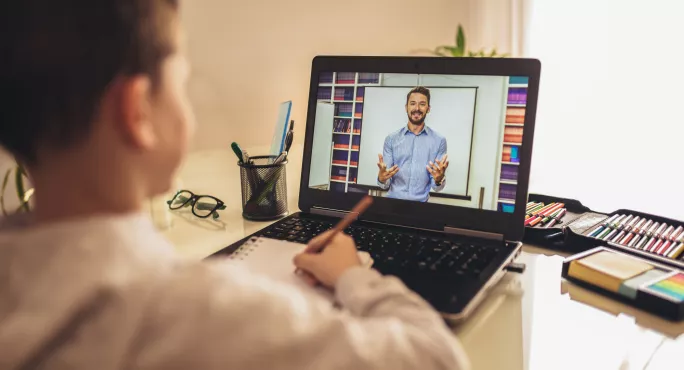How to get blended learning right for September

Regardless of how schools reopen in September, one thing is certain; it is unlikely there will be an immediate return to full-time schooling for all year groups.
There will be rotas, half days and various systems set up to allow for distancing measures and to keep everyone safe. In addition, we will have some students who may move in and out of isolation depending on symptoms in their households, and some who may need an adapted timetable due to childcare issues. We will undoubtedly continue to have students who have limited access to online learning too, so we need to ensure that whatever learning we are providing will have the maximum impact for them.
How to get blended learning right
So how can we make the most of both the time we have with students in front of us in the classroom and the time they have at home, working remotely? Here are some tips for getting blended learning right.
Reconsider the curriculum
Think carefully about the most important elements that your students will need to enable them to take the next steps in their learning. What is it they need from this year to take them to next year, or need to tackle their exams in the future? Make these elements the focus for your teaching at the moment.
Consider, too, which elements will be more difficult to explain remotely and look at how these could maybe be saved for later in the school year when there might be greater stability or more face-to-face contact.
For example, you might decide that the Shakespeare unit you had planned for the start of the year might be better placed at a time when you can work more closely with them on the topic, whereas the unit which is looking at a modern novel could be a more successful substitute if they will be working more independently.
Focus classroom work on key ideas and modelling
Explanation of the key ideas are best kept in the classroom, using body language, diagrams and storytelling to embed student’s understanding. This will also allow you to gauge how much students are understanding, through questioning, dialogue and checking body language and expressions. Your observations and formative assessment will provide the immediate feedback you need to tell you when they need to take smaller steps, be given more examples or need to be given some time to reflect on the new information they are receiving.
Equally, it is best to save modelling writing tasks and guiding deliberate practice for when you are in the classroom - where you can interact more easily with students, sharing the metacognitive steps they need to complete a task, and intervene where needed.
Wherever technology allows, it would be useful to record any modelling you do so students can return to this as a scaffold when they are working on a related task back at home.
Make use of remote sessions to check knowledge
Remote sessions can be effectively used to check knowledge using quizzes and retrieval tasks. Short quizzes can provide useful feedback to both the teacher and the student as well as give opportunities to embed information into the long-term memory and increase automaticity.
Time outside of the classroom can also be used effectively for the independent practice you want your students to undertake. Build on the guided practice from the classroom, providing prompts and keywords as scaffolds - including your model, if possible. Then, get students to tackle some extended writing pieces to consolidate what they have learned. Their work could then be emailed or shared when back in the classroom.
Get students to curl up with a book
The time students have at home could allow them opportunities to read more widely. Get them to explore some of the shorter texts and extracts to enrich a topic or simply to give them enjoyment.
Lots of schools already provided reading lists and resources both online and off to enable students to continue their reading beyond the immediate curriculum. This is even more important to try to facilitate when we are delivering a more stripped-down curriculum. Give students time to share their experiences when they are back with their peers, either remotely or in the class, enabling them to build some of those relationships back up again too.
Most of all, be mindful that you won’t be able to do it all. Things will be far from normal for quite a while still, and whilst we want to work swiftly to identify and close gaps, these are things which we can only do over time with careful planning and a clear approach.
Zoe Enser is lead English adviser for Kent. She tweets @greeborunner
You need a Tes subscription to read this article
Subscribe now to read this article and get other subscriber-only content:
- Unlimited access to all Tes magazine content
- Exclusive subscriber-only stories
- Award-winning email newsletters
Already a subscriber? Log in
You need a subscription to read this article
Subscribe now to read this article and get other subscriber-only content, including:
- Unlimited access to all Tes magazine content
- Exclusive subscriber-only stories
- Award-winning email newsletters
